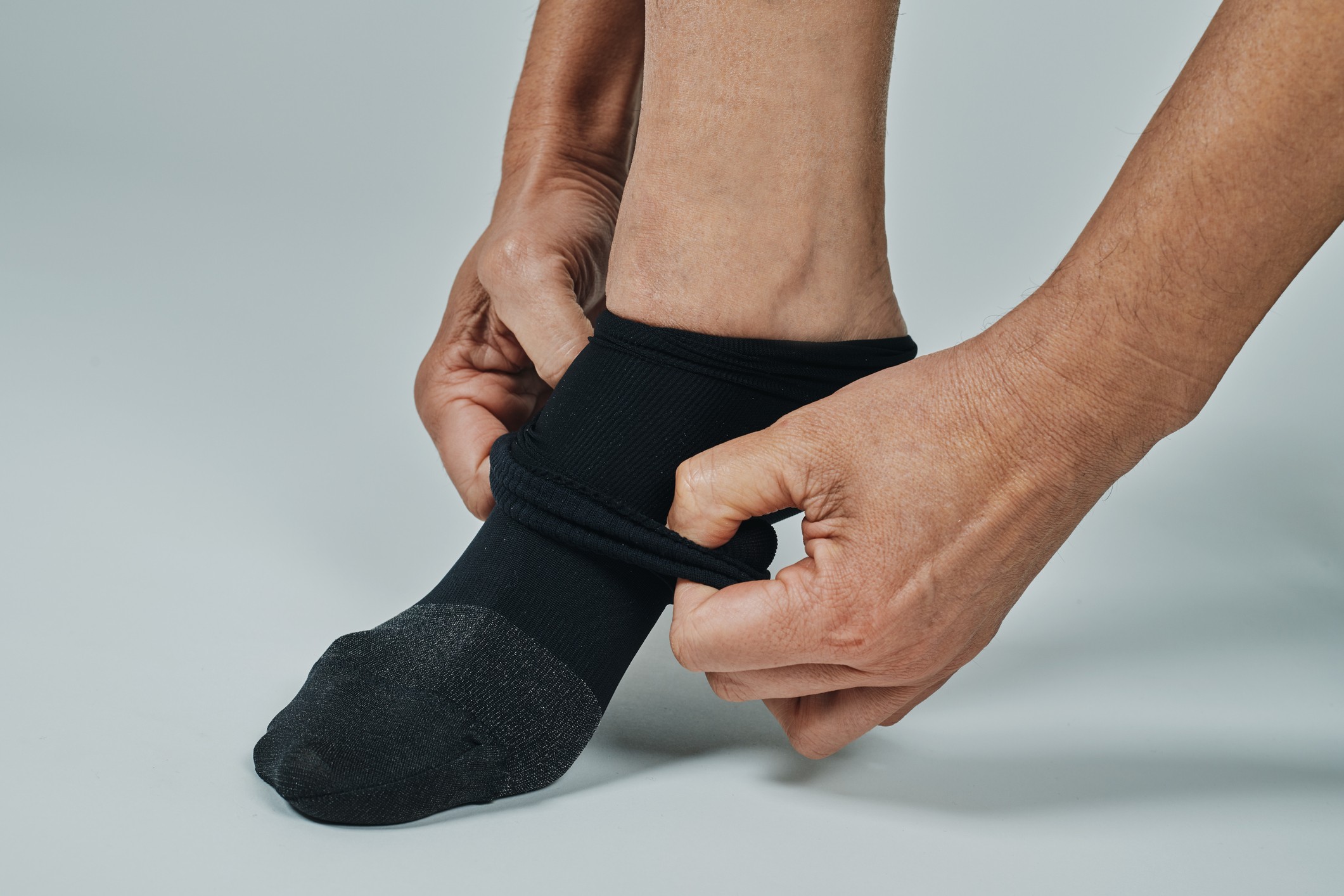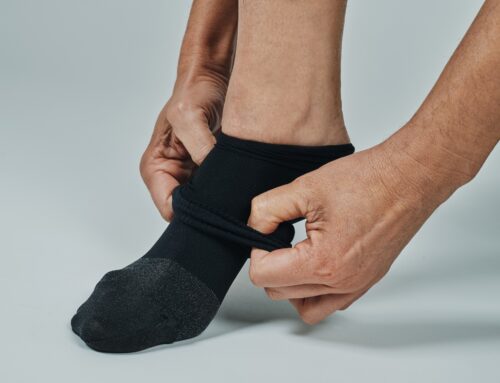Anti-embolism stockings treat leg swelling (pregnancy varicose veins), deep vein thrombosis (DVT), and post-surgical swelling. After an injury, they can help prevent DVT or pulmonary embolism (PE) as well. DVT can be life-threatening, especially if the clot breaks free and travels through the body’s bloodstream. One of the most important things to understand about anti-embolism stockings is that they are not one size fits all. In fact, despite having a universal sizing chart, each person’s results can vary.
Anti-embolism stockings are available in different colours and styles, so you can choose one that suits your needs.
Graduated compression socks or gradient compression hoses are the most common types of anti-embolism stockings. Gradient compression means a gradual increase in pressure from the ankle up to the knee. This stocking helps blood flow back to the heart and prevents blood clots from forming in your veins. Other options include knee-high, thigh-high, open-toe, and closed-toe styles. They’re available in various sizes, including extra small, small, medium, large, and extra-large.
You can buy gradient compression hosiery without a prescription, but only a few drugstores sell them. If you buy them over-the-counter, it’s essential to follow instructions carefully so that they fit properly and don’t cause discomfort or skin irritation.
How do Anti-embolism Stockings work?

Blood clots form when platelets in your blood stick together and form a solid mass that blocks an artery or vein. This can cause pain and swelling in the area where it’s located, as well as complications such as stroke or heart attack if the clot travels to another part of the body. When you wear compression stockings regularly, they can also help relieve pain caused by swollen or damaged veins in your legs. The stockings provide even pressure over your entire leg, from ankle to thigh, and are suitable for both sitting and standing positions.
To get the most out of your compression stockings, follow these tips for proper use:
Wear for an hour for a start
Do not wear them for more than eight hours at a time without removing them and allowing your skin to breathe for at least one hour before putting them back on again. If you have never worn compression stockings before, wear them for only an hour at a time to start. Don’t wear them immediately after surgery or injury.
It would be best if you waited at least 12 hours after surgery or injury before putting on anti-embolism stockings. Some doctors recommend waiting a few days before wearing them full time. Once you’ve started wearing them, wear them at all times except when showering (unless instructed otherwise). Gradually increase the time as you grow accustomed to them and become comfortable with their fit.
Wear them only during periods of rest and recovery, such as after surgery or injury, when you won’t be moving around much. You can also wear them while sleeping if you risk developing DVT. Make sure to remove your anti-embolism stockings before doing any activity that requires a lot of movement, such as moving around the house or going for a walk outside.
Be careful with compression levels.
Ensure your doctor, or physical therapist sets your compression level correctly. Hence, it’s strong enough to control blood flow but not so tight that it cuts off circulation altogether or causes skin irritation or pain. If you’re experiencing discomfort while wearing your stockings, contact your doctor immediately so they can adjust the pressure level before it gets worse and becomes painful or dangerous.
Wear during daily activities
Wear them during your daily activities, not just when sitting or lying down — especially if you’re at risk for blood clots because of an underlying condition like heart disease or cancer treatment side effects. This includes driving — make sure you’re wearing them when driving long distances so that you don’t need to remove them or exit your car during breaks from driving).
By doing so, you can compress all the blood vessels in your legs and feet evenly, even as they work hard during exercise or standing. While some people may initially have difficulty adjusting to the idea, they typically find that there is no significant difference in their comfort level or mobility once they get used to it, and they can carry on with their usual activities.
Do not over-tighten
Do not over-tighten them because this may cause bruising or skin damage around the ankles and calves. You should be able to wiggle your toes freely inside them without feeling uncomfortable or constricted by the fabric around your feet and ankles. Make sure that there is no excess material at any point along its length – if there is, cut off any extra length before applying the stocking. Ask your doctor or healthcare provider how tight is too tight when putting on your compression stocking, and check throughout the day to ensure it stays comfortable.
Change the stockings regularly
You should change your stockings at least once a day. Do this as soon as they become loose or wrinkled, occurring after 6 to 8 hours of wear. If you don’t change your stockings often enough, they may lose their elasticity and slip down your leg during wear time. This can lead to skin irritation under the stocking and potential injury if it becomes too loose on your leg. Also, this will prevent any bacteria from growing, which could lead to infections like cellulitis (skin infection) or foot ulcers.
Wash the stockings in mild soap and water
You must wash the material used to make anti-embolism stockings carefully to maintain its integrity over time, as it is very sensitive. To avoid damaging the stockings, wash them in mild soap and water, rinse thoroughly to remove all soap, and then dry them flat. Do not fold them while wet to prevent shrinking or damage. Also, do not use elastic garters with compression socks as they can damage them over time or cause an allergic reaction in some individuals. Instead, secure them with an elastic bandage if needed and put them on so that they’re snug but comfortable.
Do not use bleach or perfume on them
Nylon or silicone are used to make anti-embolism stockings, making it crucial to avoid using bleach or perfume during washing, as they can damage the fabric. These chemicals will damage the material and make it less effective at preventing blood clots from forming in your legs. When washing them, ensure you follow all directions your doctor or healthcare provider gave so that you don’t damage them.
Do not wash them by hand
Anti-embolism stockings must undergo washing in a washing machine on a gentle cycle and should be air dried away from heaters and radiators. Do not tumble dry them.
Also, do not iron them unless they come with instructions to do so from the manufacturer. Taking them to a dry cleaner if you need to iron them is better because they may not withstand high temperatures well enough to iron them at home safely.
Store them properly
Proper storage is important to prevent premature damage or stretching of the stockings, especially when they are not being worn. Hang the stockings to store them instead of folding or storing them in plastic bags or containers that could stretch out the material.
If you suspect you have a DVT, contact your doctor immediately because it can lead to serious complications such as pulmonary embolism (PE) or stroke if it goes untreated.
Share This Story, Choose Your Platform!
Table of Contents
We specialize in orthotics, body braces, and compression wear tailored to your unique needs in Toronto. Reach out to us at info@caremed.care or call 416-782-5353 to book your fitting and consultation.
Experience the difference of customized solutions designed just for you.











